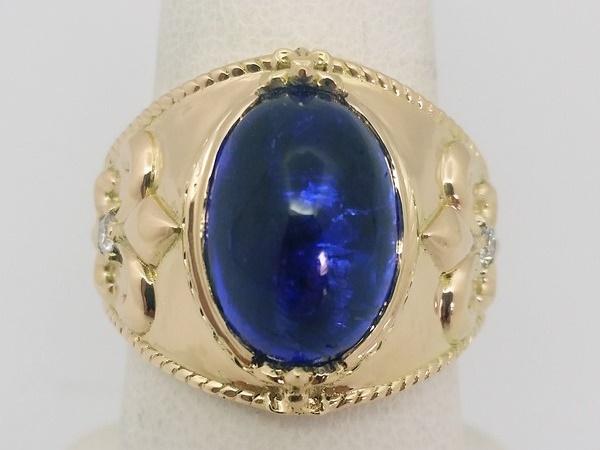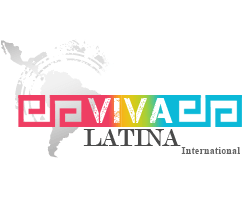Tanzanite : the origin of its price
Tanzanite stone is not a precious stone, within the meaning of French law, which only considers diamonds, sapphires, rubies and emeralds as such.
However, the price of Tanzanite stone makes it a gemstone in its own right :
- it is rare in geological sense (1000 times rarer than diamond)
- it has exceptional blue / violet colors
- it is in great demand in jewelry
- we are already talking about the closing date of the only production mine
To better understand the fascinating history of this stone, we invite you to dive into the origins of its discovery.

Tanzanite ring in 18-karat gold, the details of which can be seen here
INDEX
1. History and origins of tanzanite
2. Price of tanzanite
3. Raw tanzanite
4. Tanzanite color
5. Stone maintenance
History and origins of tanzanite stone
Tanzanite is actually a Zoist stone with a very particular composition, containing a high proportion of vanadium.
The stone is a brown color that turns deep blue when the stone is heated to 600 ° C for 30 minutes.
The variety of Zoists was already well known to gemologists since their discovery by Sigmund Zois before 1805.
The Zoists were then silicates worthless on the jewelery market.
Discovery
The Tanzanite was only discovered in 1967 by the Maasai on their territory following a bushfire which, by ravaging the savannah, sufficiently heated the local zoiste stones rich in vanadium to give them an exceptional blue hue.

Examples of raw tanzanite stones before and after heating to accentuate their color by oxidation of vanadium atoms (source)
These stones, flush with the uncrushed soil, attracted the eye of the Maasai, who had these stones examined by gemologists.
This Zoist variety, hitherto unknown, was named Tanzanite, homage to the land of origin of stone in Tanzania, by the jeweler Tiffany of New York who had fallen in love with it.
It can be said that the fame of Tanzanite depends largely on the efforts of Tiffany House to promote it.
Tanzania is not necessarily well known, I have prepared a small graphic summary of its location in Africa :

Tanzania's position in Africa
The only mine known and exploited in the world is located in the north of Tanzania, in the Merelany Hills, at the foot of Mount Kilimanjaro.
You can see the location of the Tanzanite mine in the north of the country, southeast of the city of Arusha on this satellite view :

Satellite view of the mine in the north of the country (click on image to enlarge)
The area of exploitation of the stone is only about 20 km2, as shown in this plane view.

Airplane view of tanzanite mine site
It is then possible to see the Kilimanjaro peaks from the mine site.

Kilimanjaro stands out on the horizon, seen from the tanzanite mine
The tanzanite trade nowadays
It should be noted that Tanzanite is 1000 times rarer than diamonds and that estimated reserves are only 105 million carats (only 21 tons), making it possible to estimate the drying up of the mine in about thirty years (current exploitation rate and resources known to date).
The trade in Tanzanite is 95% owned by the Maasai since the deposit is on their land.
Many have made a fortune from the dividends generated by the exploitation of this manna.
Most of the raw tanzanite production was in the past carved out of Jaipur in India, which is a gemstone-sized hub in the world.

Small raw tanzanites
But a law passed in 2010, The Mining Act, banned since the export of raw tanzanite stones of more than 1 gram (5 carats) and this in order to develop an economic activity of size of gemstones specific to Tanzania.
This measure aims to increase the revenues generated by the country's mining operations.
If it touches the tanzanite stones at first, it will be extended in the future to other rough stones (sapphires ...) operated in Tanzania.
Tanzanite mining generates 14,000 direct jobs in the local economy (source).
To discover the steps of size of a tanzanite, I invite you to watch this video :
Tanzanite prices
As you can imagine, the price of a tanzanite stone will depend on the color of the stone, the intensity of the color, the weight of the stone and the size of the stone.
Unfortunately, there is no standard tanzanite quality rating system. (source)
Unlike the diamond that has it and whose price per carat is fixed on the international market.
Thus, the GIA, world-renowned gemological laboratory, specifies on these reports of expertise only the weight, the dimensions, the size and the color and the natural origin or not and the treatments undergone by tanzanite (source).

GIA certificate of a tanzanite
Some tanzanite sellers use the diamond 4C classification to describe the quality of their stones, while others use the A, AA, AAA, AAA + or other classification scale.
None of these classification scales has any legal value on the market, it is a point that must be understood.
You will therefore need to judge the quality of the stone you are interested in according to your own preference criteria.
The price of this stone varies from a hundred dollars per carat for poor quality stones to more than 1000 dollars per carat for stones of very good quality.
Here is a table summarizing the variation in the carat price of tanzanite according to the quality and weight of the stone (the larger a stone is, the more rare it is and therefore expensive to the carat) :

Table summarizing the tanzanite carat price bracket (source)
It must be taken into account that this table is to be taken for information purposes, the price of Tanzania directly depending on supply and demand, unlike the price of diamonds.
It should be known that tanzanite is a very good alternative to sapphire, that its known reserves are very limited (it is 1000 times rarer than diamond) and that the demand increases, so its price has a tendency to climb with the time (except during periods of crisis).
Raw tanzanite stone
Because of its intense color and strong shine, tanzanite unlike other stones can be used raw to be mounted in jewelry.

Gold bracelet and raw tanzanite stones heated and unheated
Naturally, raw tanzanite stones are translucent brown in color when not heated and blue in color when heated.
Tanzanite can form very large crystals, the largest having been discovered in 2005 at 3,278 kilos.

Tanzanite colors
The peculiarity of tanzanite is to be a blue Zoiste crystal with strong trichroism.
It is important to insist on the BLUE color of tanzanite since you will be able to find on the market "pink or green tanzanite stones".
But if these stones are indeed pretty and rare, they are not Tanzanites, but Zoists, the term Tanzanite being much more sales than the unknown name of Zoiste (source).
Trichroism :
This is its ability to filter the light differently depending on the angle at which one looks at the crystal.
In the case of tanzanite, three observation directions correspond to three different colors of the crystal.
A photo explains this property much better than words :

Trichroism of tanzanite in image (source)
Depending on the angle at which a tanzanite crystal is viewed, it appears blue, purple or red.
This property offers very interesting perspectives in jewelry, depending on the size of the stone, it will then be possible to give it splinters of these three colors.

Seen from a tanzanite stone whose reflections take the 3 colors mentioned
The predominant color of a tanzanite is violet forcing over blue. The rarest stones being blue, they are also the most expensive.
Stone maintenance
Tanzanite has a hardness ranging from 6 to 7 on the Mohs scale, making it a softer stone than emerald.
It has a cleavage plane, which with the trichroism of the crystal complicates its cutting operation.
Like diamond, the cleavage plane implies that Tanzanite stone can easily break if it receives a shot from a certain angle.
It is therefore prudent to ask if you want to mount your tanzanite stone ring or not.
If the answer is yes, you should always be extremely careful not to practice manual activities with your ring, as this may damage your stone.
You can get in touch with us to get a quote for your jewel project with tanzanite stone or else, here are some examples of tanzanite jewelry from the jeweler Juwelo that are more affordable.
For more information:
- Visit the website of the Tanzanite One mine
- Check out this very interesting Pinterest board on tanzanite stone
- Discover these blue topaze rings made in our workshop
- Unique emerald ring
- Where is lapis lazuli found in the world
- Brazilian paraiba tourmaline
- Natural sapphire stone price
- 24k gold jewelry online shoppping
- 24k gold pendant for men



Comments
Nethicumara said:
I have got a natural cut and polished tanzanite bluish violet colour,17 carats .
How much can I sell it for?
Raeesa said:
I have a tanzanite stone that I would like to sell but don’t have a certificate for it. How do I sell it and for how much……
Gail said:
Thank you for the information
Tex W sutton said:
Got 70ct of tanzanite
Not sure what to do with it